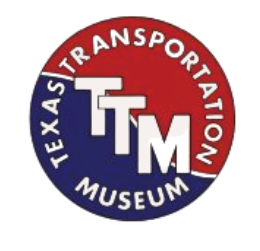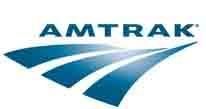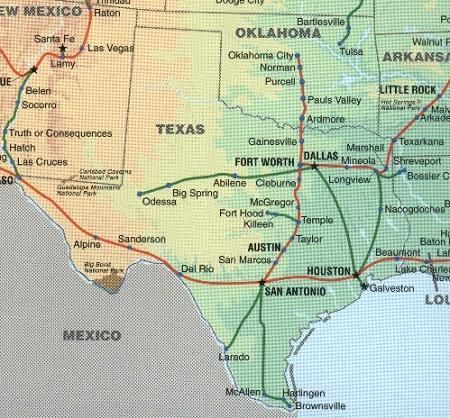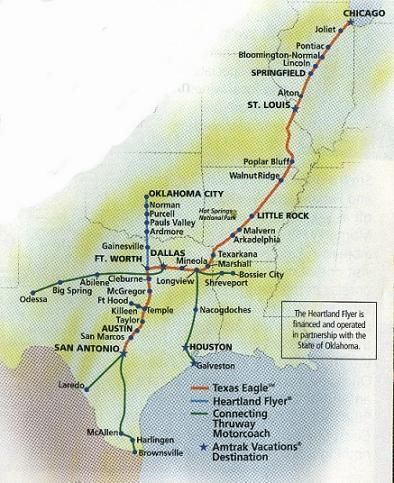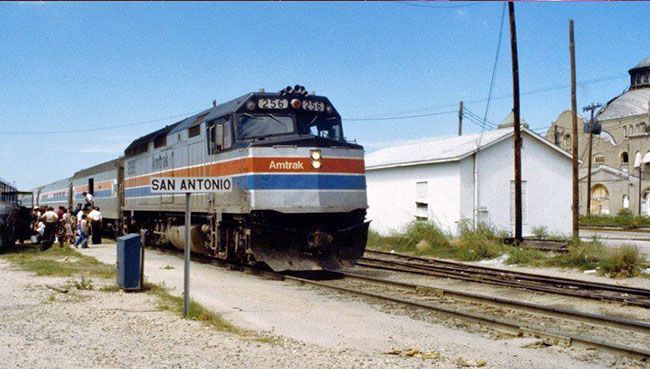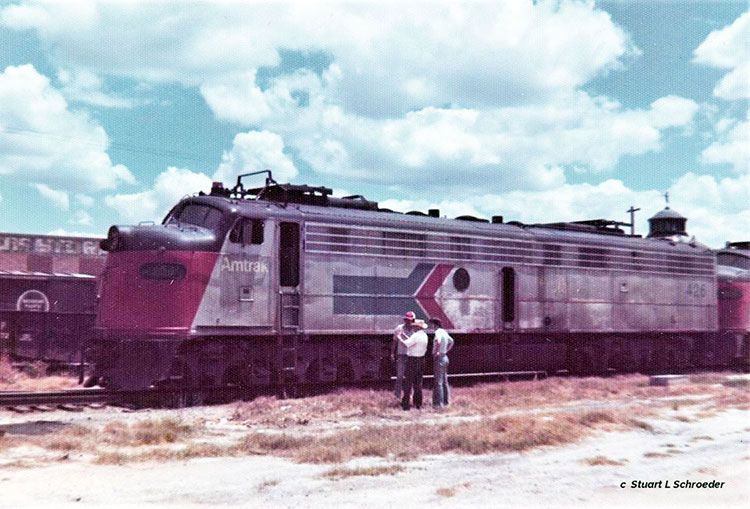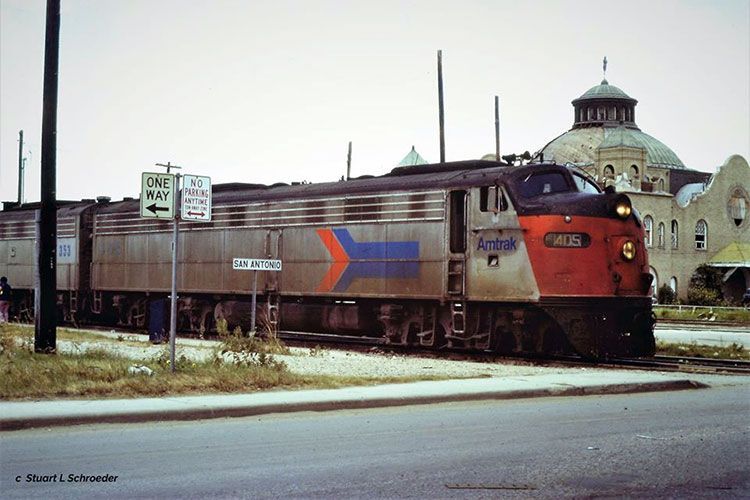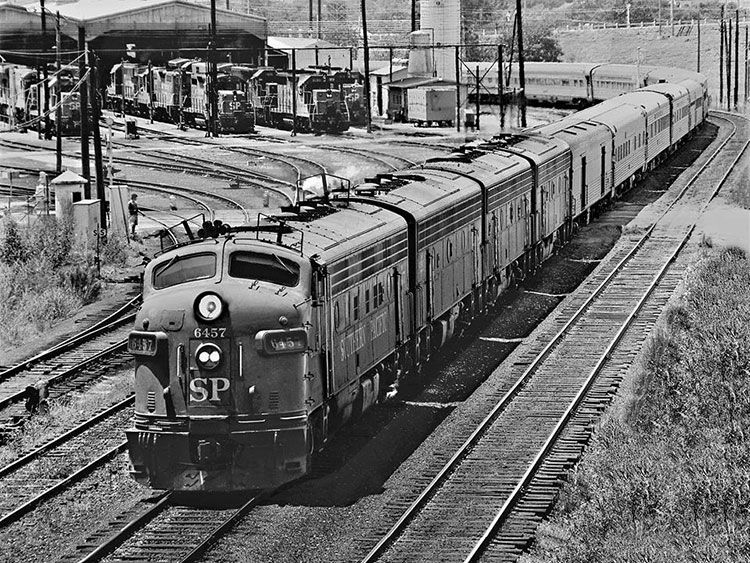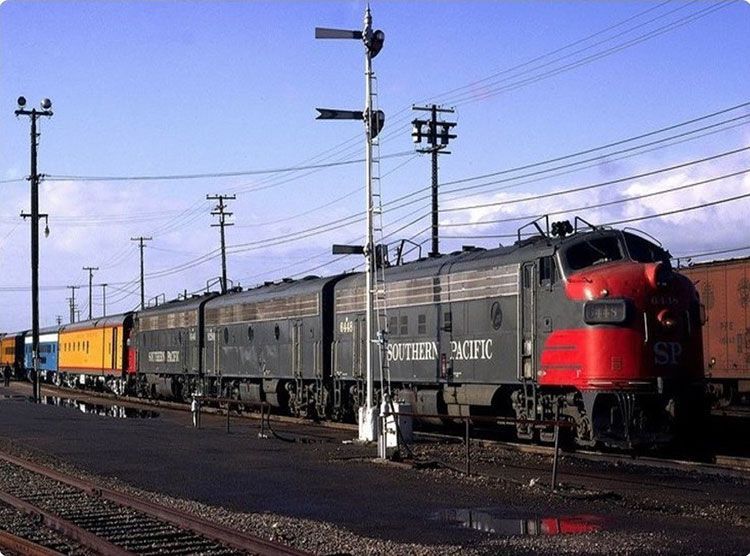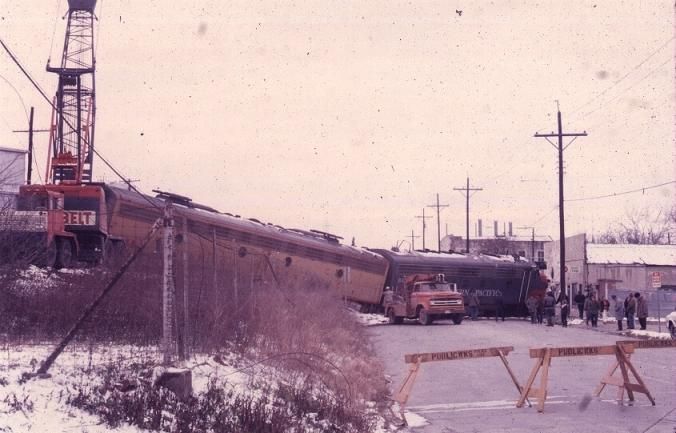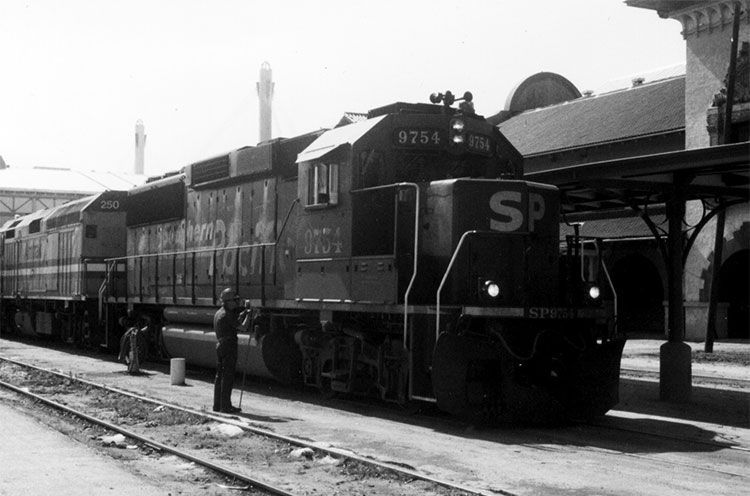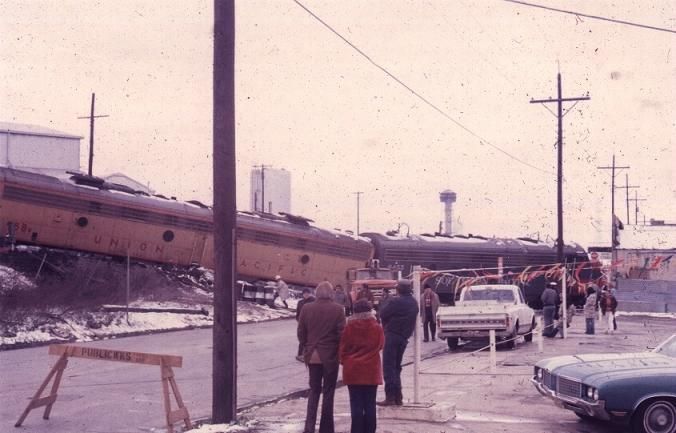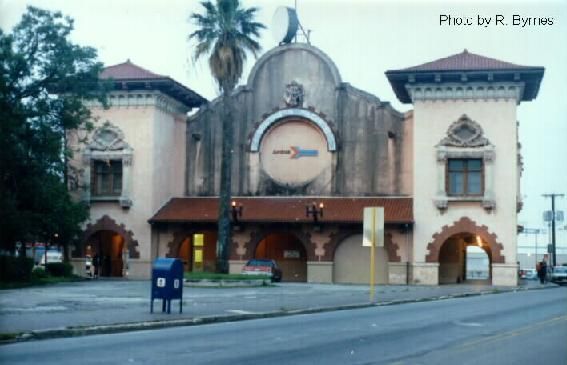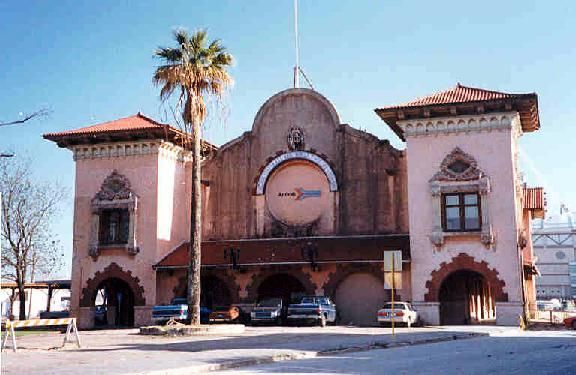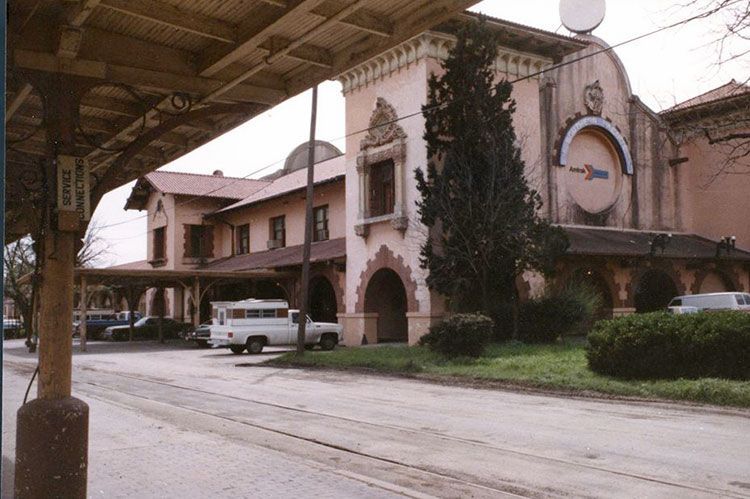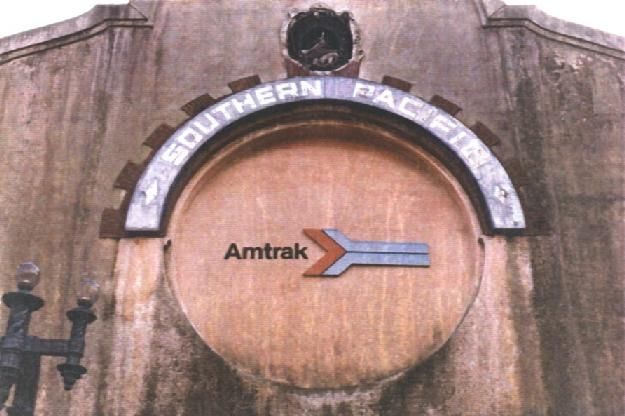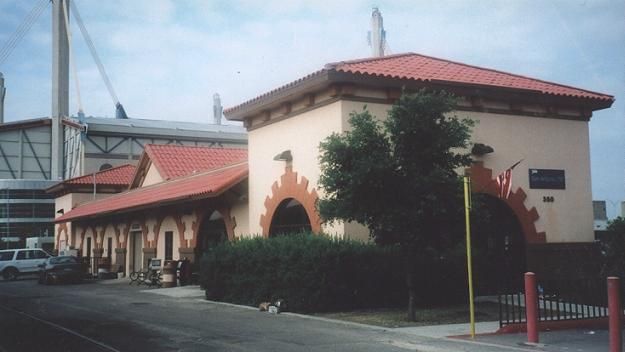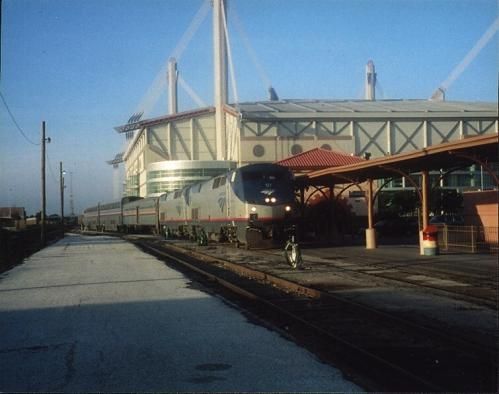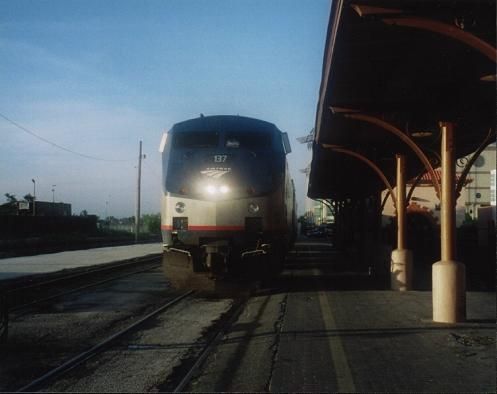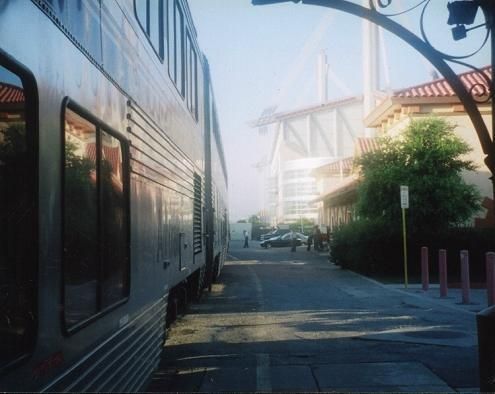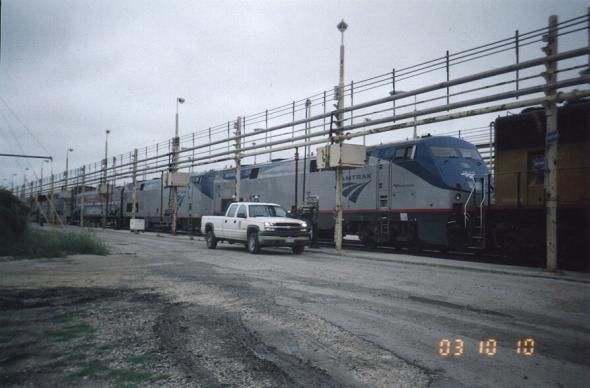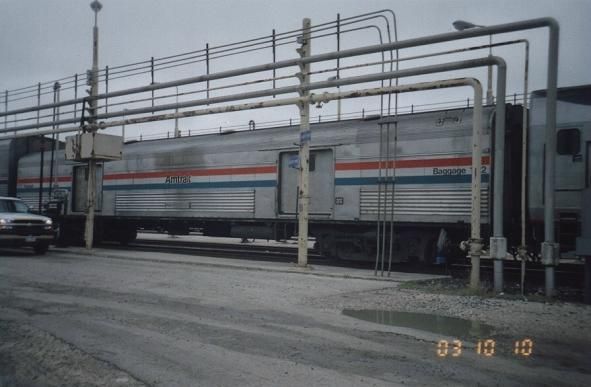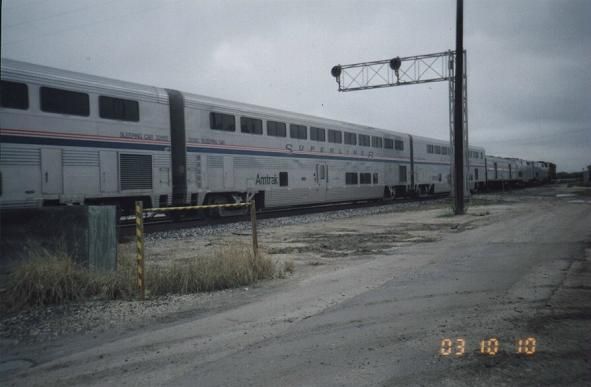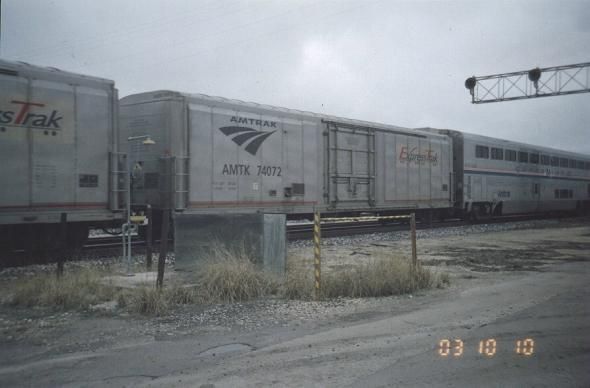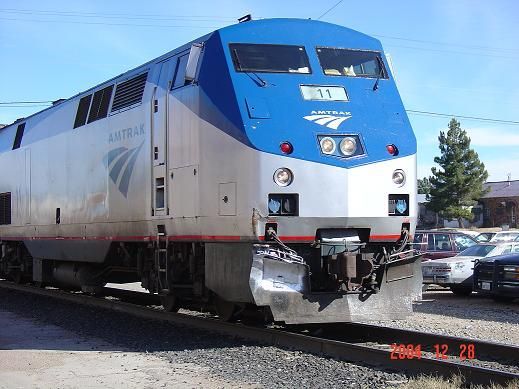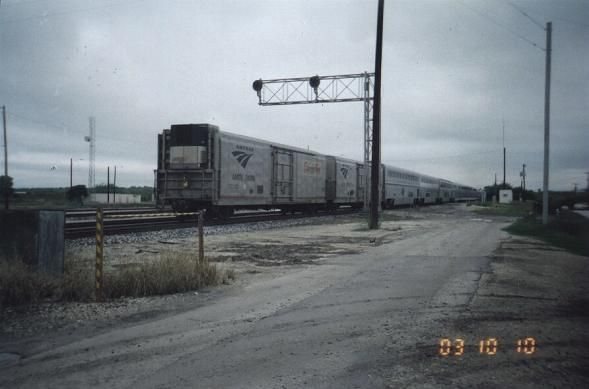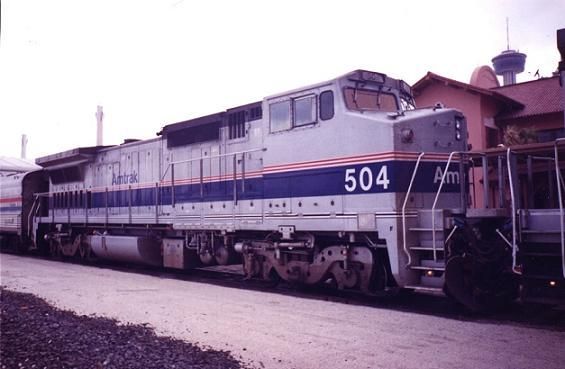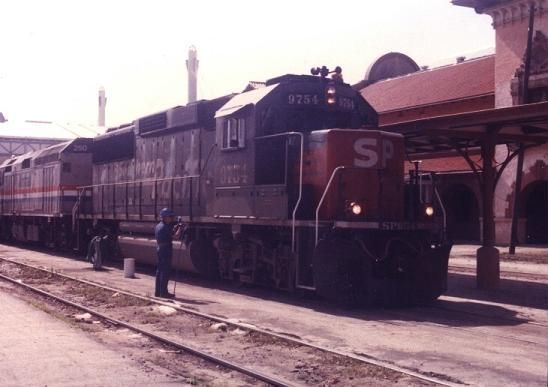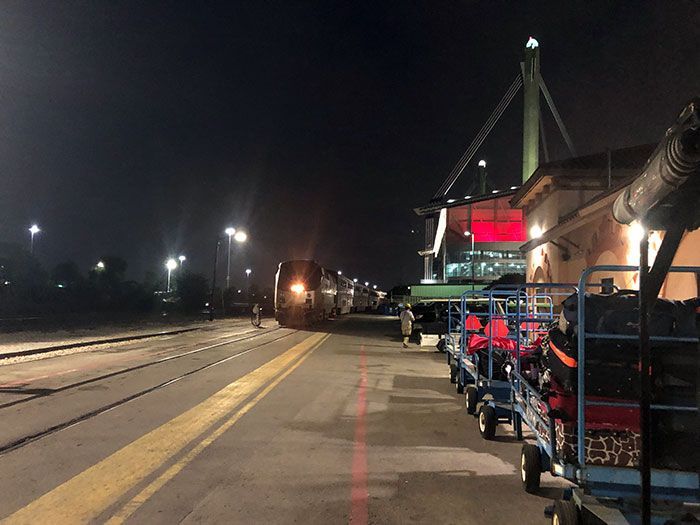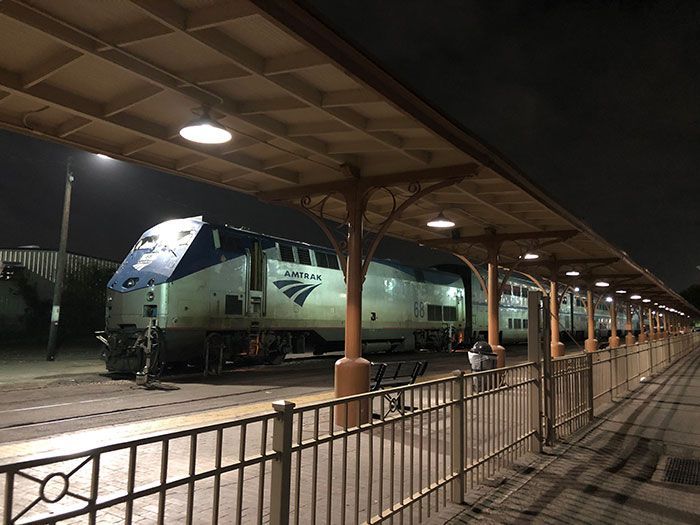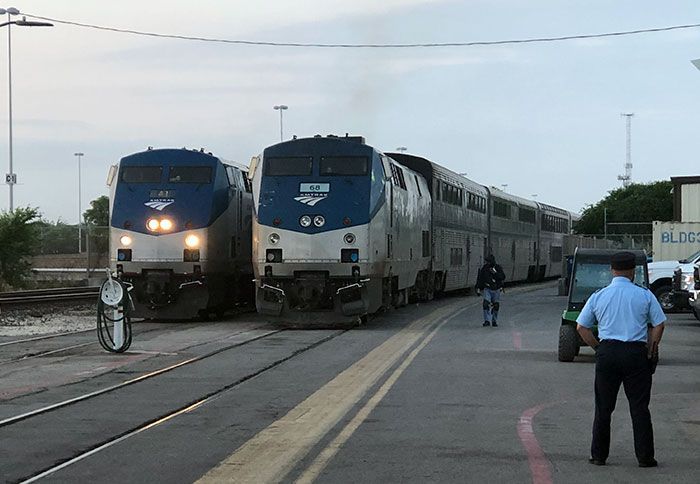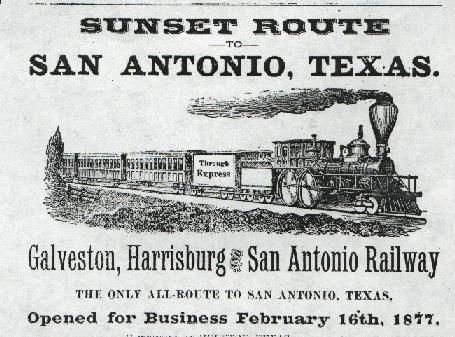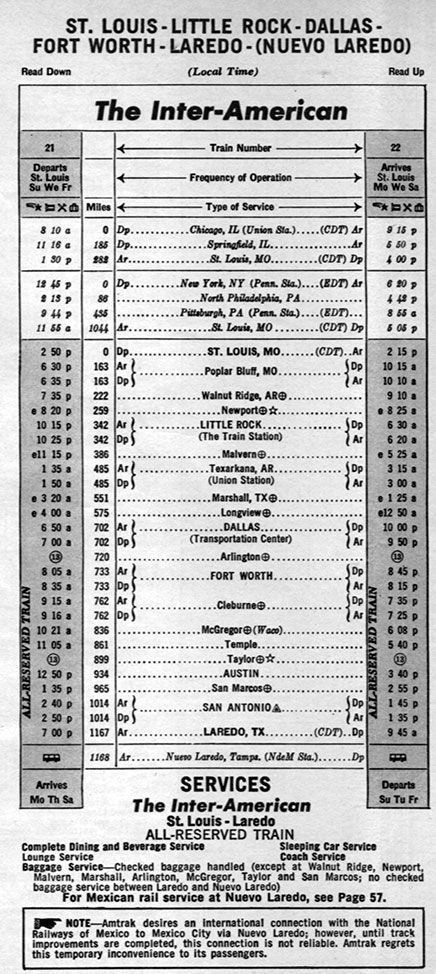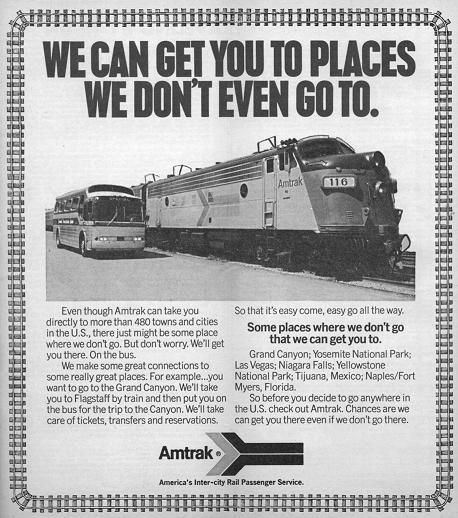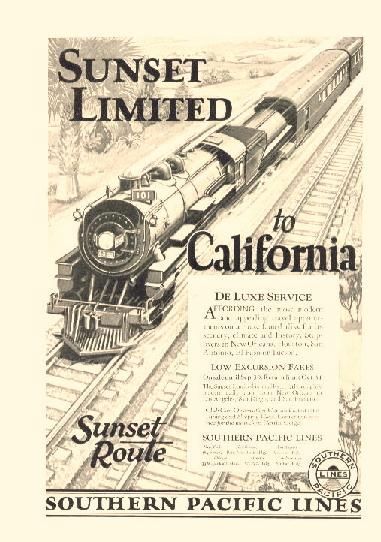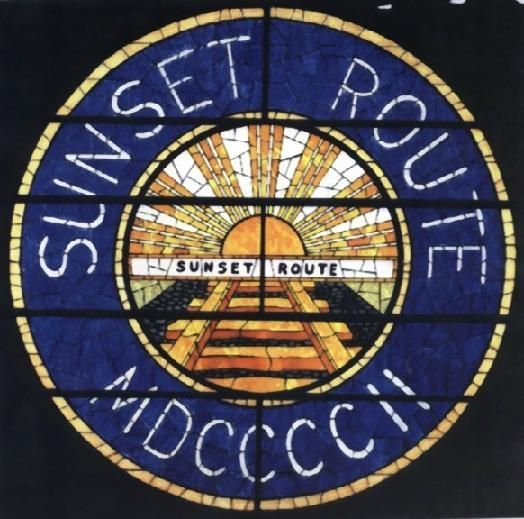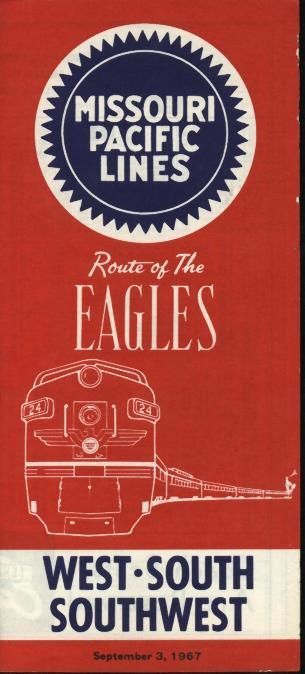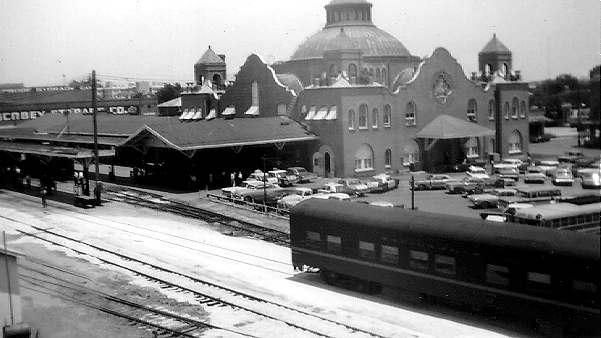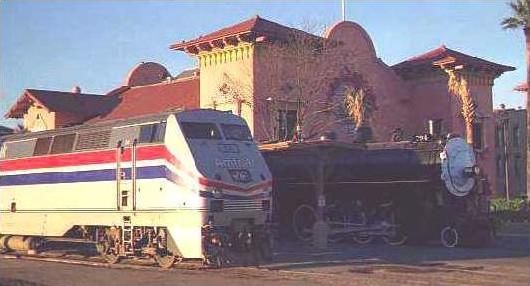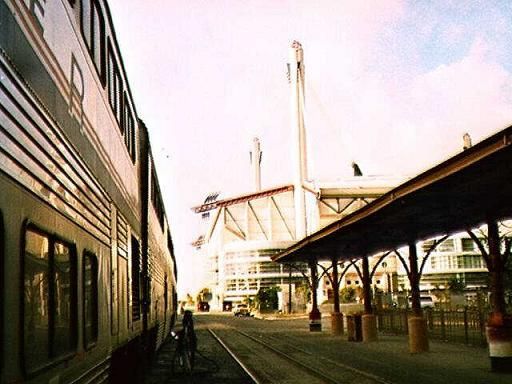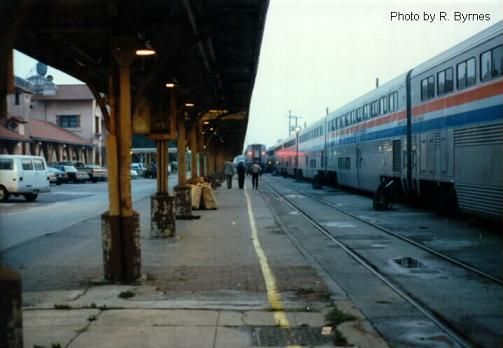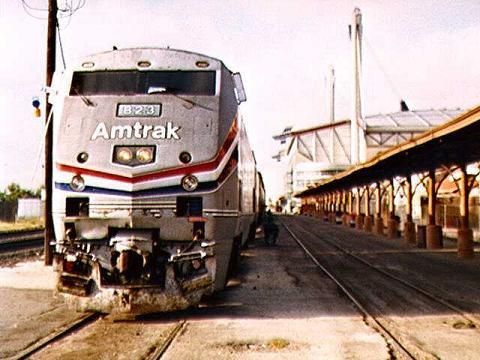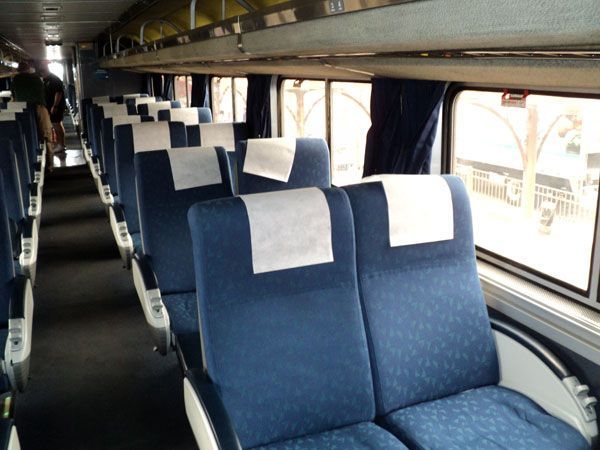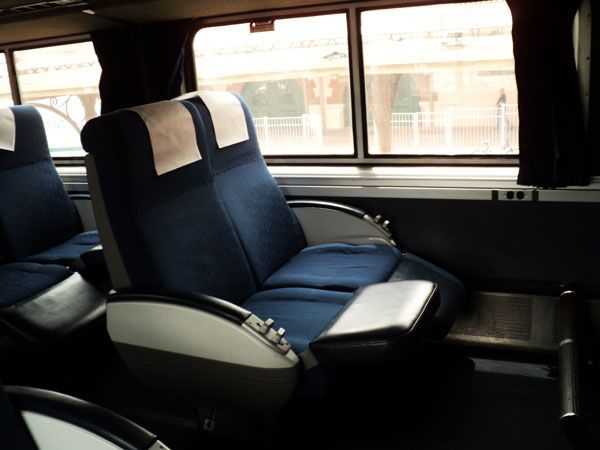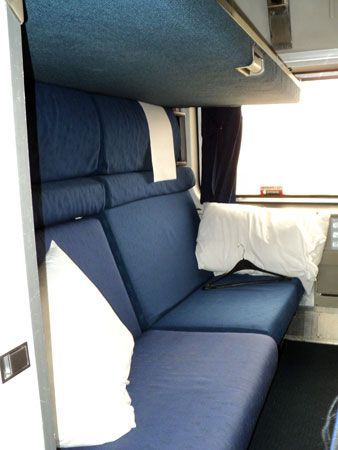AMTRAK in San Antonio
On May 1, 1971, AMTRAK began passenger service to San Antonio, and, of course, the rest of the nation. It took over the Southern Pacific's Sunset depot and the operation of the SP's Sunset Limited train between California and the Gulf of Mexico. It also revived the Texas Eagle, which ran from the Midwest to Mexico. The Missouri Pacific had ended the train the previous year on 9/20/1970. No other services were revived, such as to Corpus Christi. Still, one could travel, once again, to the north, south, east and west of the San Antonio, and, in 2004, only one element has been discontinued. One can no longer get to Laredo by passenger train.
Although it is not the purpose of this site to delve too deeply into the whole subject of AMTRAK, it is worth giving a small bit of its history, to better understand its role in serving the city. By 1965, over half the national rail network lacked any passenger service. Most railroads still had what was known as common carrier obligations. In order to operate freight service, they had to offer passenger service as well. They were obligated to get permission from the ICC - the Interstate Commerce Commission - to close a depot, discontinue any passenger service or raise fares. Passenger service had never been as profitable as freight service and had been in decline since the 1920s, except during World War 2, since when not a single railroad had made any profit at all from carrying passengers. Between 1948 and 1956, expenses rose three times as much as fares.
Railroads, which are privately owned, need to make a profit to survive. They were more than keen to get out of the passenger business. AMTRAK came into being because the government did not want to allow passenger service to disappear completely. The National Railroad Passenger Corporation, also known as AMTRAK, was formed and thirteen railroads gave a total of $190 million plus many locomotives and rolling stock, in order to be relieved of the burden. When AMTRAK began on 5/1/1971, it operated over 21,000 miles of routes with 400 stations in 43 states. This, however, was less than half the amount of passenger service that been available just the day before.
AMTRAK in the beginning had 300 locomotives and 1,200 cars. They came from all the railroads that had signed over their passenger service. Not many were in peak condition. In fact, one of the supporting reasons for the creation of AMTRAK was that the rolling stock the railroads were using was rapidly approaching retirement and they were extremely unwilling to invest anything into providing new equipment when there did not seem to be any real demand on the part of the public for passenger service. From a commercial passenger traffic share peak of 98% in 1916, to 31.4% in 1957 to a mere 7% in 1970, railroads would indeed have been hard pressed to justify such expenditure to their share holders.
AMTRAK was facing a task of monumental proportions. It had certain things in its favor. It was a nationwide, unified, centrally managed operation which had no railroad competition on the passenger routes it offered. It did not own any track itself and although it had to lease trackage rights from the railroad companies, it did not have the burden of having to maintain any lines itself. It also, as a creation of politics, had access to government funding. It was hoped in the beginning that revenues would provide anywhere from half to two-thirds of expenses, and that subsidies would decline accordingly. In 1972, income was $163 million and expenses were $310 million. Factor in inflation, and by the 1990s, income was $454 million and expenses were $1.08 billion. While the ratio is almost the same, the amounts involved are just so much bigger. Hence the fights in Washington over AMTRAK get bigger and bigger as well, but that is a story you can follow in any number of places, if you wish.
In 1971, AMTRAK leased trackage rights from the Missouri Pacific and the Southern Pacific and began offering service to San Antonio. The Texas Eagle ran north to South, from Chicago to Laredo. At one point, it was hoped that this train would be part of a ambitious plan to offer service from within Canada to within Mexico. In fact the train never did cross the southern border and, in time, service to Laredo itself was ended and the train now ends in San Antonio. The Sunset Limited ran east to west, all the way from Orlando, Florida, to Los Angeles, California. Of course, one may change trains in San Antonio, and therefore be able to travel from Chicago, or any point along the Texas Eagle route, to Los Angeles, and many people do.
The Sunset Limited is one of the most renowned trains in American railroading. The train got its name even before Southern Pacific completed its transcontinental route in 1883. It is somewhat lost to the mists of time as to who coined the name, Sunset Limited, but the express train from New Orleans to San Antonio was given the name while the line was still being operated as the Galveston Harrisburg & San Antonio Line. Southern Pacific acquired the GH & SA and kept the name and used it for the fast train between Los Angeles and New Orleans, which began in 1901. The logo of the train became the logo for the entire railroad and was reproduced magnificently during the restoration of the historic Sunset depot. The original stained glass window was removed when AMTRAK took over the station but, with the help of some remarkable research, since the actual detailed drawings were lost when the San Francisco earth quake destroyed the Southern Pacific offices, a new window was re-created. AMTRAK is keeping the tradition alive. The word 'Limited" refers to the fact that the train is an express and only makes a limited amount of stops as opposed to stopping at every station along the way, an important distinction for people buying tickets once upon a time. Initially AMTRAK's Sunset Limited also began in New Orleans but it was later expanded and now begins in Orlando, Florida.
In January 2004, TRAINS magazine had some very interesting things to say about the Sunset Limited. The cited the westward journey as the most underrated train ride in the country. The eastward journey is less spectacular because so much of the "good stuff" is traveled by night. It cites, crossings of the towering bridge, the Huey Long bridge over the Mississippi, an unparalleled variety of scenery and even commends the crews themselves. In the same edition, however, the magazine gives a fairly damning report on timekeeping issues on this train. The blame is laid squarely on the shoulders of the Union Pacific. It also states that this is not a new problem. AMTRAK went so far as to sue the Southern Pacific over the problem in 1979.
The Texas Eagle takes it name from the Missouri Pacific express from St Louis to Laredo. This was one of MOPAC's signature trains. The train was renamed from the previous "Sunshine Special" and began service began on 8/15/1948. The new name celebrated the new streamliner equipment that was being introduced. The train ran from St. Louis to Longview, Texas where it split into two parts. The western section went to El Paso, via Dallas and Fort Worth. The southern section headed south to Laredo, via San Antonio. AMTRACK's version of the train begins further north, in Chicago. It still comes to Longview and then heads west through Dallas and Fort Worth. At that point it heads south again, to San Antonio. The direct line from Longview to San Antonio is gone, as is service west of Fort Worth. Service south of San Antonio has also been discontinued although passengers can still buy a ticket from Chicago to Laredo. One has to take a bus to complete the last leg of the journey. As late as 1976, AMTRAK was hoping to provide service all the way to Mexico city. The brochure reads, " . . . however, until track improvements are completed, this connection is not reliable. AMTRAK regrets this temporary inconvenience to Passengers." It is also worth adding that Amtracks first name for the train was the Inter-American. Additionally, for many years, the train, which was running on Missouri Pacific lines, stopped at the old Missouri Pacific depot, long after it was closed. Tickets had to be purchased at the Sunset depot and then transportation was provided to the train. The two depots are about twelve blocks apart on Commerce Street. Nowadays both trains use the same modern AMTRAK depot. Some sources indicate that problems with providing reliable on time service stretch back all the way to Missouri Pacific days and pre-date the Union Pacific's take over of MOPAC. AMTRAK even resorted to the courts at one point to be allowed to run the train at 75 MPH as they were being restricted to just 60 MPH. AMTRAK did win but running passenger trains on tracks better suited to freight commerce continues to be a problem. On a more positive note, however, ridership on the Eagle was reported as having increased by 20% in 2001
There is no commuter train service out of San Antonio, so there are just these two major trains. Local service was being discontinued as early as the 1950s. Nowadays, AMTRAK only has to lease trackage rights from one company, the Union Pacific, as it acquired first the Missouri Pacific in 1982 and then the Southern Pacific in 1996. AMTRAK offers incentives to the railroads for on time service. While service with the BNSF - the Burlington Northern Santa Fe - in the Dallas area is said to be very good, it appears that the same cannot be said for the Union Pacific. The latter runs its rails somewhat differently, and it has also faced some huge challenges in integrating the Southern Pacific into its network, but it is hoped by both sides and the traveling public that things will improve.
In the mid 1990s, AMTRAK was obliged to vacate the historic Sunset Depot. The building had become somewhat dilapidated and its huge size dwarfed the real needs of AMTRAK. The depot itself is now owned by VIA, the local bus company and is operated, following extensive renovation. as an entertainment complex. A new depot was built for AMTRAK right next door, in a style cleverly reminiscent of the Sunset station. This is quite a statement of Amtrack's intentions to stick around, which, from a rail lover's point of view, is a very good thing. Alarm bells sound all too frequently that service, especially the Texas Eagle, will be terminated. Just such an announcement in 1996 was head off at the pass due to the swift intervention of US Senator Kay Bailey Hutchison, the Texas legislature and many cities along the route who together came up with a funding plan that is kept it going. AMTRAK was able to fully repay the loan it was given - early! Not only that, service has been expanded from three days a week to daily service and passenger numbers have grown accordingly.
National Train Day 2012
As stated at the beginning of this piece, AMTRAK is a creature born of railroads being unwilling to continue to provide passenger service and Washington politicians being unwilling to see it disappear. While there is little discussion given to the fact that our road system is completely subsidized, it is interesting to note that airlines are also having huge financial difficulties and, once again, the public is being obliged to support them as well. It seems that we just may end up having a rational discussion about how public transportation is provided in this country. It would certainly be timely.
AMTRAK in San Antonio Timeline
━━━━━━━━━━━━━━━━━
1971
AMTRAK takes over the "Sunset Limited," the nations's oldest continually operated rail passenger train from the Southern Pacific and also the historic Sunset Station. The train runs three times a week from Los Angles to Orlando, Florida.
━━━━━━━━━━━━━━━━━
1973
AMTRAk creates a new service called the "Inter-American, using tracks belonging to the Missouri Pacific. Ir uns betwen Laredo and Fortw Worth where passenegers can board another AMTRAK trains to the north. San Antonio pasengers are obliged to buy their tickets at SUnset Station and use buses to get to the old Missouri Pacific station which is now closed and empty.
━━━━━━━━━━━━━━━━━
1974
The Inter-American is extended to St. Louis.
━━━━━━━━━━━━━━━━━
1979
The Inter-American is combined with other trains and is extended to Chicago.
AMTRAK sues the Southern Pacific over the poor level of service it is receiving on its lines. Delays caused by SP dispatchers giving priority to its freight trains despite AMTRAK's contract have made AMTRAK's service a laughing stock.
━━━━━━━━━━━━━━━━━
1981
Service to Laredo is abandoned. This allows the train to be routed to Sunset Station from where it uses old MK&T tracks to head north from San Antonio. The train is re-named as the "Texas Eagle," the name of the Missouri Pacific train that once plied the same route. The train runs three times a week.
━━━━━━━━━━━━━━━━━
1988
Dallas is added to the route which formerly only served Fort Worth
━━━━━━━━━━━━━━━━━
1999
New AMTRAK depot opens at rear of Sunset Station
━━━━━━━━━━━━━━━━━
2005
The Sunset Limited is obliged to end service in San Antonio following damage to the tracks in Louisiana cause by Hurricane Katrina.
━━━━━━━━━━━━━━━━━
2006
Sunset Limited service to New Orleans from Los Angles is restored. The remainder of the route to Orlando, Florida remains out of service, due to the reluctance of CSX, the freight railroad owner in that area, to see it return.
Frank Crothers at the San Antonio bicycle race track.
Transportation Museum
CONTACT US TODAY
Phone:
210-490-3554 (Only on Weekends)
Email:
info@txtm.org
Physical Address
11731 Wetmore Rd.
San Antonio TX 78247
Please Contact Us for Our Mailing Address
All Rights Reserved | Texas Transportation Museum
